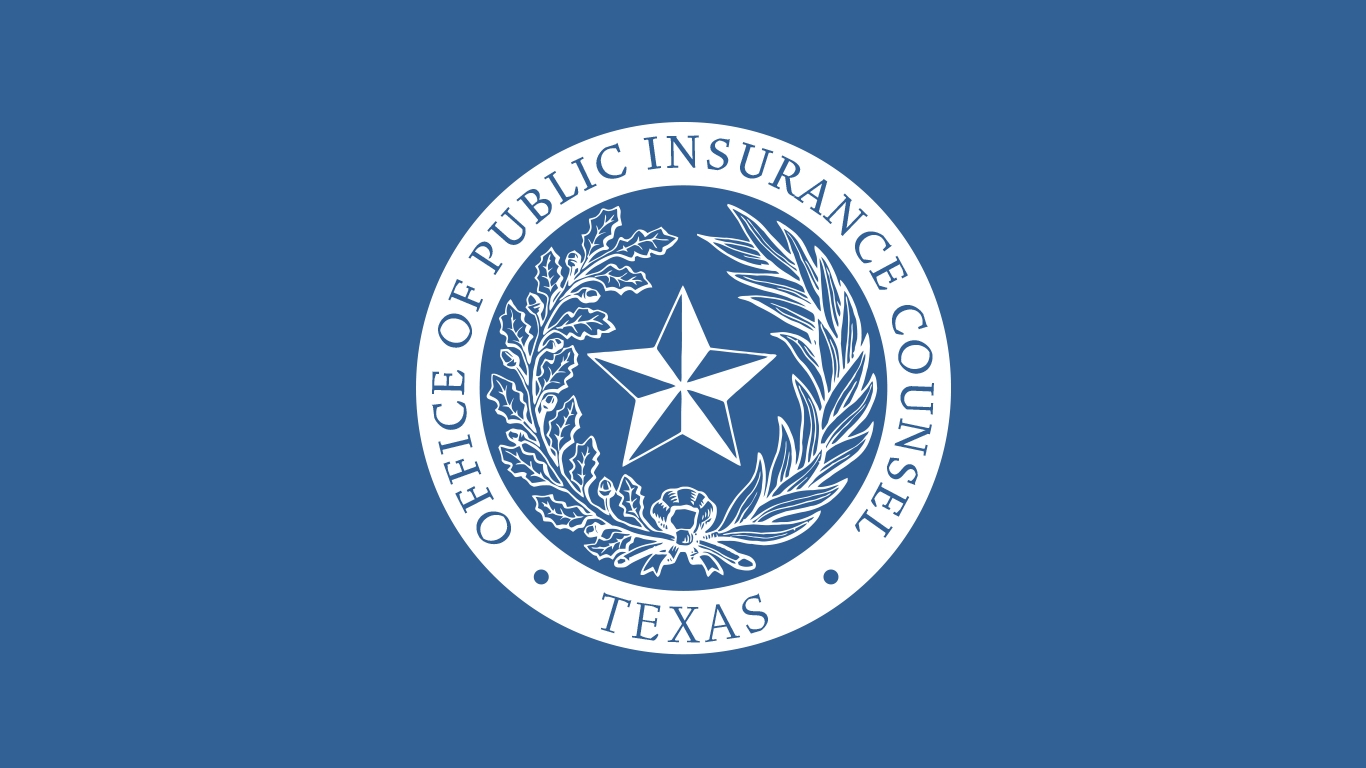

Finance
What Is An Insurance Policy Grace Period?
Published: February 19, 2024
Learn about the importance of an insurance policy grace period in finance. Understand how it can provide financial protection in times of need.
(Many of the links in this article redirect to a specific reviewed product. Your purchase of these products through affiliate links helps to generate commission for LiveWell, at no extra cost. Learn more)
Table of Contents
Introduction
Insurance provides financial security and peace of mind, offering protection against unforeseen events that could otherwise lead to significant financial losses. Whether it’s health, life, auto, or home insurance, policyholders rely on their insurance coverage to safeguard their well-being and assets. However, in the hustle and bustle of daily life, it’s not uncommon for individuals to miss an insurance premium payment due to various reasons such as forgetfulness, financial constraints, or administrative errors. This is where the concept of an insurance policy grace period comes into play.
Understanding the nuances of a grace period is crucial for policyholders as it directly impacts the continuity of their insurance coverage. In this article, we will delve into the intricacies of insurance policy grace periods, exploring their significance, typical lengths, and the consequences of missing a payment during this period. By shedding light on these aspects, we aim to empower individuals with the knowledge needed to navigate their insurance policies effectively and avoid potential pitfalls associated with missed payments.
Understanding Insurance Policy Grace Period
An insurance policy grace period refers to a specified duration after the premium due date during which the policyholder can make a late payment without facing negative repercussions such as policy cancellation or lapse in coverage. It essentially serves as a buffer, offering a brief extension beyond the due date to submit the premium payment. The grace period varies depending on the type of insurance and the terms outlined in the policy.
During this grace period, the insurance coverage remains in effect, providing a safety net for the policyholder in case an unforeseen event occurs. It’s important to note that while the coverage persists during the grace period, any claims made during this time might be subject to the outstanding premium payment. Therefore, policyholders should strive to make the payment as soon as possible to ensure uninterrupted coverage and seamless claim processing.
It’s essential for policyholders to familiarize themselves with the specifics of their insurance policy’s grace period, including the length of the grace period, any associated fees or penalties, and the implications of late payments. By understanding these details, individuals can effectively manage their insurance obligations and mitigate the risk of coverage disruptions.
Importance of Grace Periods
Grace periods play a pivotal role in the realm of insurance, offering policyholders a crucial window of opportunity to rectify missed premium payments without immediate repercussions. This allowance for late payments can be instrumental in preventing sudden lapses in coverage that could leave individuals and their assets vulnerable to unforeseen risks.
One of the primary benefits of a grace period is that it provides a safety net for policyholders who may encounter temporary financial constraints or face logistical challenges in making timely payments. Life is inherently unpredictable, and individuals may encounter unexpected financial burdens or administrative hurdles that impede their ability to pay premiums on time. The grace period acknowledges these potential obstacles and offers a reasonable timeframe for resolving payment issues without jeopardizing the insurance coverage.
Moreover, grace periods reflect the mutual understanding between insurers and policyholders, acknowledging that occasional delays in premium payments can occur despite best intentions. By granting this leniency, insurers demonstrate a commitment to supporting their clients through unforeseen circumstances, fostering a sense of trust and reliability in the insurance provider-policyholder relationship.
From a broader perspective, grace periods contribute to financial inclusivity by accommodating individuals who may experience temporary financial hardships. This inclusivity aligns with the fundamental purpose of insurance – to provide a safety net for individuals and families, irrespective of transient financial challenges.
Furthermore, grace periods serve as a preventive measure against abrupt policy cancellations that could leave individuals exposed to significant risks. Without a grace period, a missed payment could swiftly result in a lapse of coverage, leaving policyholders vulnerable at a time when they need protection the most. This safety buffer offers peace of mind, knowing that there is a brief window to address payment issues and maintain continuous insurance coverage.
In essence, grace periods are a vital component of insurance policies, embodying the principle of flexibility, understanding, and support within the insurance landscape. They offer a lifeline for policyholders during challenging times and reinforce the overarching goal of insurance – to provide stability and protection in the face of uncertainties.
Common Grace Period Lengths
Grace periods in insurance policies typically vary in duration, with different types of insurance and insurers setting their own specific timeframes. While these periods can differ, there are common grace period lengths that are frequently observed across various insurance sectors.
For many types of insurance, including health, life, and disability insurance, a typical grace period ranges from 30 to 31 days. This one-month timeframe allows policyholders to rectify missed premium payments without immediate repercussions, providing a reasonable window for addressing payment issues.
Auto insurance policies often feature a grace period of seven to 15 days, offering a shorter but still significant extension for late premium payments. This timeframe acknowledges the frequency of monthly or bi-monthly premium payment schedules and provides a brief buffer for policyholders to manage their payments effectively.
Homeowners’ insurance policies commonly incorporate a grace period of 10 to 15 days, allowing homeowners to address payment discrepancies without facing immediate policy cancellations. This timeframe aligns with the typical monthly payment cycles and offers a reasonable opportunity to resolve payment issues.
It’s important to note that these common grace period lengths are not universally standard across all insurance providers and policies. Insurers may have variations in their grace period durations, and policyholders should refer to their specific policy documents to ascertain the exact length of their grace period.
Understanding the grace period length is crucial for policyholders, as it directly impacts the timeframe within which they can rectify missed payments and maintain continuous insurance coverage. By being aware of these common grace period lengths, individuals can proactively manage their insurance obligations and avoid potential coverage disruptions.
Grace Periods for Different Types of Insurance
Grace periods are a fundamental aspect of various types of insurance, providing policyholders with a crucial timeframe to address missed premium payments and maintain continuous coverage. The specific grace period lengths and their applications vary across different types of insurance, reflecting the nuances of each insurance sector.
Health Insurance: Health insurance policies commonly feature a grace period of 30 to 31 days, allowing individuals to make late premium payments without immediate repercussions. This grace period is essential in ensuring that policyholders have sufficient time to manage their premium payments, especially during transitional periods or unforeseen financial challenges.
Life Insurance: Grace periods for life insurance policies typically align with health insurance, offering a 30 to 31-day window for policyholders to rectify missed premium payments. Given the long-term nature of life insurance coverage, this grace period provides individuals with the opportunity to address payment issues without jeopardizing their policy’s continuity.
Auto Insurance: Auto insurance policies often incorporate a grace period of seven to 15 days, acknowledging the frequency of premium payment schedules and offering a brief extension for late payments. This grace period is particularly beneficial for individuals managing multiple financial obligations, providing a short but significant window to address payment discrepancies.
Homeowners’ Insurance: Grace periods for homeowners’ insurance policies typically range from 10 to 15 days, providing homeowners with a reasonable timeframe to rectify missed premium payments. This grace period is essential in ensuring that homeowners can manage their insurance obligations effectively, especially during periods of financial adjustments or unexpected expenses.
Disability Insurance: Disability insurance policies commonly feature a grace period akin to health and life insurance, offering a 30 to 31-day window for policyholders to address late premium payments. This grace period acknowledges the potential challenges individuals may face during periods of disability or income disruption, providing the necessary flexibility to manage premium payments.
Understanding the specific grace period associated with each type of insurance is crucial for policyholders, as it enables them to navigate their insurance obligations effectively and avoid potential lapses in coverage. By being aware of these grace periods, individuals can proactively manage their premium payments and mitigate the risk of coverage disruptions.
What Happens If You Miss a Payment During the Grace Period?
Missing a premium payment during the grace period can have various implications depending on the specific insurance policy and the terms outlined by the insurer. While the grace period offers a window of opportunity for late payments, it’s essential to understand the potential consequences of missing a payment during this extended timeframe.
Accrued Interest or Late Fees: Some insurance policies may impose accrued interest or late fees for payments made during the grace period. Policyholders should review their policy documents to ascertain if such charges apply. These additional costs serve as a financial incentive for timely payments and may impact the overall cost of the insurance coverage.
Impact on Coverage: While the insurance coverage typically remains in effect during the grace period, missing a payment without rectifying it within the grace period could lead to a lapse in coverage. In such cases, policyholders may face challenges in processing claims or accessing the benefits of their insurance until the payment is resolved and coverage is reinstated.
Policy Cancellation: If the premium payment is not made within the grace period, the insurance policy may be subject to cancellation. This could leave the policyholder without insurance coverage, potentially exposing them to significant risks in the event of unforeseen circumstances.
Reinstatement Procedures: In the event of a lapse in coverage due to missed payments, policyholders may need to follow specific reinstatement procedures outlined by the insurer. This could involve paying outstanding premiums, undergoing a review process, or adhering to certain conditions to reinstate the policy.
It’s important for policyholders to communicate with their insurance provider if they anticipate challenges in making timely payments, as some insurers may offer flexibility or alternative arrangements to accommodate temporary financial constraints. Open communication can often lead to mutually beneficial solutions that prevent coverage disruptions and maintain the policyholder’s financial security.
By understanding the potential outcomes of missing a payment during the grace period, policyholders can proactively manage their insurance obligations and take the necessary steps to address payment discrepancies in a timely manner, ensuring continuous coverage and peace of mind.
Conclusion
Insurance policy grace periods serve as a vital mechanism for policyholders, offering a crucial window of opportunity to address missed premium payments and maintain continuous coverage. These grace periods vary across different types of insurance, providing policyholders with the flexibility needed to manage their insurance obligations effectively. By understanding the significance of grace periods and the potential implications of missed payments, individuals can navigate their insurance policies with confidence and foresight.
It is imperative for policyholders to familiarize themselves with the specific grace period outlined in their insurance policies, including any associated fees, the impact on coverage, and the procedures for reinstatement in the event of a lapse. This knowledge empowers individuals to proactively manage their premium payments and prevent potential coverage disruptions that could leave them vulnerable to unforeseen risks.
Furthermore, grace periods underscore the collaborative relationship between insurers and policyholders, acknowledging the occasional challenges individuals may face in meeting their financial obligations. By providing this leniency, insurers demonstrate a commitment to supporting their clients through transient financial hardships, fostering trust and reliability in the insurance provider-policyholder dynamic.
Ultimately, grace periods align with the fundamental purpose of insurance – to provide stability, protection, and peace of mind in the face of uncertainties. They offer individuals the assurance that, even in the event of a missed payment, there is a reasonable opportunity to rectify the situation and maintain the security of their insurance coverage.
As individuals navigate the complexities of insurance, understanding and leveraging grace periods can be instrumental in safeguarding their financial well-being and assets. By staying informed, communicating openly with insurers, and addressing payment discrepancies proactively, policyholders can uphold the integrity of their insurance coverage and uphold the fundamental promise of insurance – to provide security and resilience in the face of life’s uncertainties.














